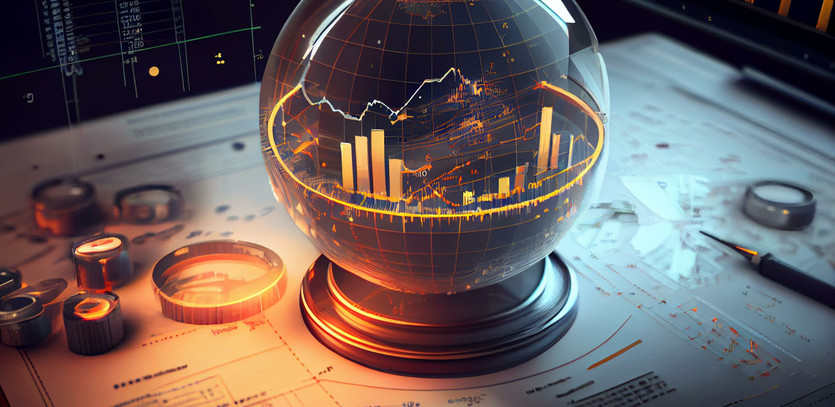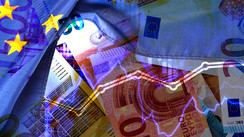Introduction to the EAFE Index
The EAFE Index, managed by Morgan Stanley Capital International (MSCI), presents a snapshot of international equity markets excluding the U.S. and Canada. Established as a prominent benchmark for international equity markets, it's an amalgamation of companies spread across 21 nations in Europe, Australasia, and the Far East (East Asia). Also referred to as the MSCI EAFE Index, it boasts the reputation of being the first international stock index.
An Overview of the EAFE Index
The EAFE is a broad market index encapsulating stocks based in Europe, Australasia, and the East Asia region. The term Australasia encompasses both Australia and New Zealand. The MSCI, in 1986, introduced this index, which incorporates 795 stocks from 21 different nations. Notably, Israel, classified as a developed country in May 2010, was subsequently included in the index. The EAFE Index primarily serves institutional investors and asset managers, who use it to track the performance of international developed market equities.
- Broad Spectrum: The EAFE Index encompasses stocks across Europe, Australasia, and the Far East.
- Australasian Region: This area includes Australia and New Zealand.
- Historical Overview: MSCI launched the EAFE Index in 1986, encapsulating 795 stocks from 21 nations.
- Israeli Inclusion: Israel became part of the EAFE Index in May 2010.
- Benchmark Utilization: Investors and asset managers employ the EAFE Index to measure the performance of international developed market equities.
Delving Into the EAFE Index
Structure and Composition
The EAFE Index's structure is based on market capitalization, with each component's weighting proportional to its market capitalization. Japan and the United Kingdom, countries with some of the most substantial stock markets, have the largest relative weighting in the index. Furthermore, market value changes in larger-cap stocks have a more substantial impact on the index than those in smaller-cap stocks.
The largest allocation in the index, as of February 28, 2023, is from companies listed on Japanese exchanges, accounting for 21.22% of the index. Following Japan, the leading countries in the EAFE index are the United Kingdom, France, Switzerland, and Germany. Furthermore, the index represents various sectors, with Finance, Industrials, and Healthcare being the most dominant.
Countries Included in the EAFE Index
The chart below presents the countries embraced by the MSCI EAFE Index. Israel earned its place in May 2010 as a developed nation.
| Europe | Pacific | Middle East |
|---|---|---|
| Austria | Australia | Israel |
| Germany | Japan | |
| Portugal | Hong Kong | |
| ... | ... |
Composition of the EAFE Index
Companies
As of the end of February 2023, Japanese stocks constituted the most substantial portion of the index, totaling 21.22%. Other leading nations include the United Kingdom, France, Switzerland, and Germany.
Here are the top 10 company listings and their weights:
- Nestlé: 2.07%
- ASML Holding N.V.: 1.67%
- Novo Nordisk B: 1.56%
- LVMH Moet Hennessy: 1.54%
- Shell: 1.48%
- AstraZeneca: 1.36%
- Roche Holding Genuss: 1.36%
- Novartis: 1.22%
- TotalEnergies: 1.03%
- BHP Group (AU): 1.03%
Sectors
The sectors within the MSCI EAFE Index vary:
- Financials: 19.19%
- Industrials: 15.34%
- Health Care: 12.73%
- Consumer Discretionary: 11.67%
- ...
Advantages and Disadvantages of the EAFE Index
Investments that track the EAFE Index come with both benefits and limitations:
Advantages
- Diversification: The EAFE Index offers wide-ranging exposure to 21 countries and over 700 companies.
- Stability: Investors may experience less volatility due to its focus on developed nations.
- Cost Efficiency: Passive management can result in lower investment costs.
Disadvantages
- Restricted Exposure: Excludes potentially lucrative markets like China, India, Brazil, Russia.
- Limited Growth Potential: Focuses on developed markets, excluding potentially higher growth in emerging markets.
- Market Cap Dependence: Heavily influenced by market capitalization, possibly limiting returns.
EAFE Index as a Performance Benchmark
Asset managers and institutional investors employ the EAFE Index to gauge international developed equity market performance. By contrasting funds with the EAFE Index, managers can assess their value addition. It also allows investors to diversify beyond North American borders.
Several ETFs mirror the EAFE Index, including iShares MSCI EAFE ETF (EFA), with $49 billion in net assets as of February 2023.
EAFE vs. ACWI: A Comparison
The MSCI ACWI (All Country World Index) signifies global market performance, encompassing 2,933 companies in 47 countries. The table below contrasts both indices' annual performance.
| Year | MSCI EAFE | MSCI ACWI |
|---|---|---|
| 2022 | 5.84 | -18.36 |
| 2021 | 11.26 | 18.54 |
| ... | ... | ... |
FAQ
- What Does MSCI EAFE Stand For?: Morgan Stanley Capital International, Europe, Australasia, and Far East.
- Does MSCI EAFE Include China?: No, it excludes China, India, Brazil, Russia.
- What Companies Are in the MSCI EAFE Index?: 21 countries, including Australia, Austria, Belgium, Denmark, and more.
The Bottom Line
The EAFE Index, inaugurated in 1986 by Morgan Stanley Capital International, traces the stocks across 21 developed global nations, excluding the U.S. and Canada. As a benchmark for ETFs and mutual funds, it seeks to proffer return opportunities and emulate its performance, making it a valuable asset for investors.





